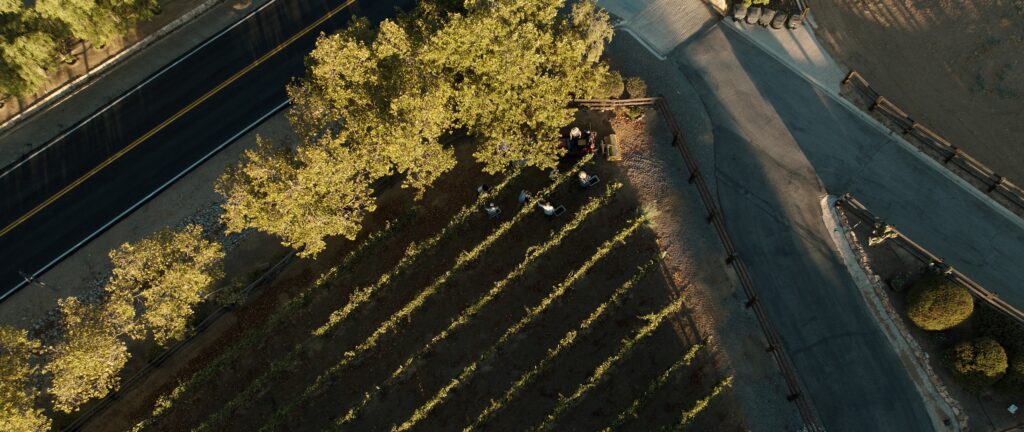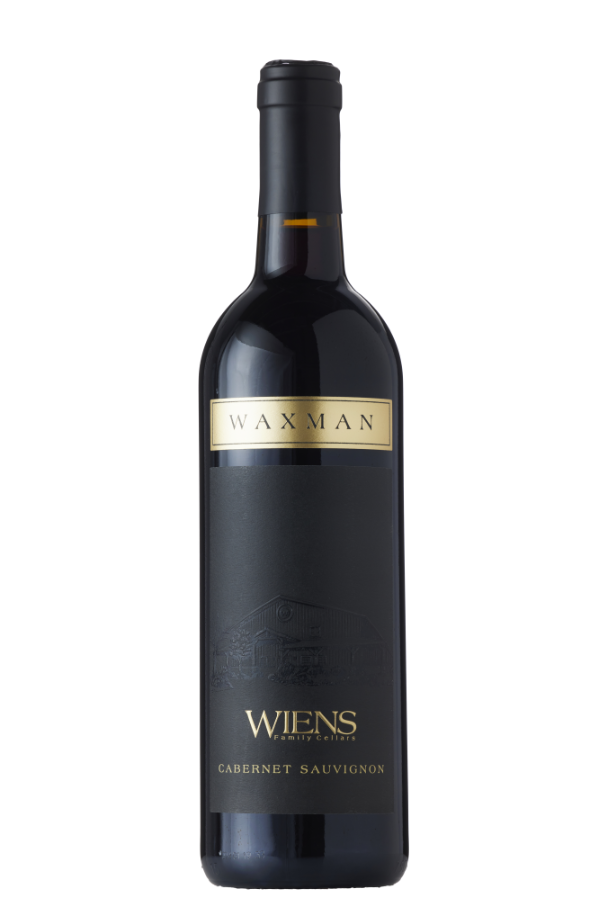
Welcome to a journey that uncorks the hidden magic within every sip of wine – the enchanting concept of terroir. Terroir isn’t just a French word; it’s an invitation to explore the intricate dance between nature and craftsmanship that results in the wines we treasure. It’s a term that encapsulates the unique fingerprint of a vineyard – the soil, climate, and soul of a place that breathe life into each grape.
We welcome you to the enchanting world we’ve created at Wiens Cellars, where the magic of terroir unfolds in every sip of our handcrafted wines. Our story is one of passion, dedication, and the harmonious interplay between soil and climate. As we embark on this journey through the impact of soil and climate on wine flavor, we invite you to join us in exploring the essence of terroir that shapes each bottle we proudly produce.
In this exploration, we’ll dive into the heart of terroir, peeling back the layers to reveal how the partnership of soil and climate shapes the very essence of wine. By the end, we hope to inspire the idea that terroir isn’t just a concept; it’s the spirit of the earth captured in liquid form, waiting to be savored.
What is Terroir?
Understanding terroir is like unraveling the intricate DNA of a wine’s character. It encapsulates the unique synergy between soil, climate, topography and human touch, that shape the flavors and aromas of each bottle. Terroir is the invisible conductor of a symphony played by nature and craftsmanship, giving wines a distinct identity and an immersive sense of place. In short, it is the essence of a specific vineyard site, a composition of elements that shape the grapes and, subsequently, the wines themselves.
Components of Terroir
- Soil: The foundation of terroir, the very earth in which grapevines entwine their roots, holds secrets that whisper through the vines. Different soil types, from limestone to clay, influence the nutrients available to the vines, dictating the grapes’ flavors, textures, and aromas.
- Climate: Nature’s maestro, climate orchestrates the daily rhythm of a vineyard. Sun-drenched days and cool, breezy nights; rainfall and humidity; these elements dictate the pace of growth, affecting grape ripening and the resulting balance of sugars and acids.
- Topography: The lay of the land adds its brushstrokes to the terroir canvas. Slopes, altitudes, and angles of sunlight exposure sculpt the vines’ interaction with the elements, influencing the grapes’ concentration and complexity.
- Human Influence: The hands that tend the vines and craft the wines are integral to terroir. Each winemaker’s decisions, from pruning techniques to harvesting times, interact with the environment, imprinting their artistry onto the final bottle.
In this intricate dance of soil, climate, topography, and human touch, terroir emerges – a tapestry woven with a vineyard’s history and geography. Understanding terroir is a glimpse into the soul of a wine, a journey that reveals the profound connection between the land and the glass.
The Role of Soil in Wine Flavor
From the vineyard soil to the glass, the journey of wine is a symphony composed by nature and nurtured by human craftsmanship. Amidst this orchestration, the soil beneath the vines plays a pivotal role in shaping the wine’s character. Each soil type brings unique hues and textures to the final canvas of flavors and aromas found in wine. In this exploration of the interplay between soil texture and wine, we delve into the different types of soil and their remarkable influence on the wines we savor.
The 3 Most Common Types of Soil and Their Characteristics
- Sandy Soils: Wines grown in sandy soils often exhibit bright acidity and an elegant profile. The quick drainage of these soils encourages grapevines to concentrate their energy on producing grapes with crisp flavors and floral aromas. Examples include Sauvignon Blanc from wine regions like Australia, where the sandy soils contribute to its zesty acidity.
- Clay-Rich Soils: Clay-rich soils provide ample water retention, resulting in wines with a robust body and well-defined tannins. Grapes thrive in these soils, allowing for longer ripening periods and complex flavor development. Bordeaux’s Merlot grapes, nurtured in clay soils, yield wines with rich fruit character and a velvety texture.
- Volcanic Soils: Volcanic soils infuse wines with a distinctive mineral edge and a subtle smokiness. These soils are well-draining and impart a unique complexity to the grapes. The volcanic slopes of Mount Etna in Sicily, for instance, contribute to the character of Nerello Mascalese grapes, yielding wines with earthy nuances and bright acidity.
How does that affect the wines?
Soil’s influence on wine style transcends mere physical support. It’s a flavor architect, endowing grapes with distinct attributes. Sandy soils, for instance, promote drainage, leading to lighter, elegant wines, while clay imparts depth and robustness. Minerals absorbed by roots infuse flavors, yielding wines with subtle earthiness or vibrant minerality. Let’s give you three examples:
- Acidity and Aromatics: Sandy soils, known for their excellent drainage, create an environment where grapevines struggle to find water. This stress prompts the vines to focus their energy on producing smaller, concentrated grapes. The result is wines with higher acidity and intense aromatics. For instance, the Chardonnay grapes grown in the sandy soils of Chablis in Burgundy yield wines with a crisp acidity and a pronounced minerality.
- Structure and Tannins: In clay-rich soils, water retention is higher, leading to slower grape ripening. This extended maturation period encourages the development of thicker grape skins and deeper color pigments. The wines produced from such grapes boast structured tannins and a robust body. Italy’s Tuscany region exemplifies this with its Sangiovese grape, which, nurtured in clay soils, produces the complex and age-worthy wines of Chianti.
- Mineral Complexity: Volcanic soils, rich in minerals and nutrients, imprint a unique mineral complexity on wines. Grapevines draw nutrients from the volcanic bedrock, resulting in wines with distinct earthy flavors and a characteristic smokiness. White wines like the Assyrtiko grape from Santorini, Greece, thrive in volcanic soils, contributing to its vibrant acidity and pronounced volcanic terroir expression.
How does that affect our wine in Temecula?
Soil isn’t just a canvas; it’s a palette of flavors that artists, in the form of winemakers, deftly paint upon. From Bordeaux’s gravel-kissed Cabernets to Burgundy’s limestone-infused Chardonnays, each wine is a testament to soil’s profound influence, etching its legacy sip by sip. To dive deeper, we’ll explain this with three of our most popular varietals:
- Cabernet Sauvignon + Sandy Loam Soils: Cabernet Sauvignon vines rooted in sandy loam soils, like ours at Wiens Cellars, produce wines with a distinct personality. The well-draining nature of sandy loam allows for controlled water availability, encouraging the development of balanced grape flavors. Red wines from these soils often display ripe blackberry and cassis notes, coupled with smooth tannins and a hint of minerality. California’s Napa Valley is renowned for its Cabernet Sauvignon grown in sandy loam soils, resulting in wines of exceptional quality and richness.
- Syrah + Clay-Rich Soils: Syrah vines thrive in clay-rich soils, where water retention supports gradual grape maturation. Wines produced from these vineyards exhibit a robust structure, velvety tannins, and deep, concentrated flavors. The Rhône Valley in France, particularly the Hermitage region, is a prime example of where Syrah’s interaction with clay-rich soils creates wines with intense dark fruit flavors, pepper spice, and a textured palate.
- Fiano + Volcanic Soils: Fiano, an Italian white grape variety, flourishes in volcanic soils, infusing its wines with a unique character. Volcanic soils contribute to wines with a mineral-driven complexity, bright acidity, and distinctive aromatics. Italy’s Campania region, where Fiano thrives in volcanic terroir, yields wines with flavors of citrus, tropical fruits, and a touch of smokiness, showcasing the volcanic soil’s profound influence on the varietal.
The Role of Climate in Wine Flavor
In the ever-evolving tale of wine, climate stands as both artist and alchemist, sculpting the very essence of flavor. As we journey deeper, we uncover the exquisite dance between cool and warm climates, each producing wines that tell their own story. Cool climate wines, like a delicate sonata, often exhibit elegance and higher acidity. On the other hand, warm climate wines boast boldness, characterized by ripe fruits and full-bodied expressions.
How Climate Affects the Ripening Process of Grapes
Imagine grapevines as weathered interpreters, translating the climate’s tale into the fruit they bear. The sun-drenched days of warm climates expedite the ripening process, infusing grapes with higher sugar content and intensity. Cool climates, however, bestow a longer, gentler journey, nurturing grapes with balanced sugars and acids, resulting in a final product that sings harmoniously.
Cool vs. Warm Climate Wines
From the frost-kissed hills of Germany’s Mosel region come Rieslings that are alive with vibrant acidity and delicate aromas – the hallmark of a cool climate. In the sun-soaked valleys of Temecula, Cabernet Sauvignons exude richness and opulence, crafted by the warm embrace of the Californian sun. Here are a few more you might be familiar with:
- Cool Climate Wine – Pinot Noir from Oregon, USA: Pinot Noir thrives in cool climate regions due to its sensitivity to temperature fluctuations. In Oregon’s Willamette Valley, the maritime influence moderates temperatures, resulting in a longer wine growing season. The cool climate imparts elegance to the wines, with bright acidity and delicate red fruit flavors. These Pinot Noirs often exhibit earthy undertones and a silky texture, showcasing the characteristic traits of a cool climate.
- Warm Climate Wine – Malbec from Mendoza, Argentina: Malbec finds its sweet spot in warm climate regions, and Mendoza’s high-altitude vineyards provide an ideal environment. The warm days and ample sunlight lead to full grape ripening, resulting in bold and robust wines. Mendoza’s Malbecs boast rich dark fruit flavors, velvety tannins, and a hint of spice, demonstrating the influence of a warm climate on the varietal’s expression.
- Cool vs. Warm – Chardonnay Comparisons: Chardonnay, a versatile grape, showcases distinct characteristics in both cool and warm climate regions. In Burgundy, France (cool climate), Chardonnays are often crisp and mineral-driven, with notes of green apple and citrus. In contrast, Chardonnays from California’s Temecula Valley (warmer climate) tend to be more opulent, displaying ripe tropical fruit flavors, buttery textures, and a touch of oak influence. These examples highlight how climate significantly shapes the flavor profile of a single grape variety.
As you uncork these wines, the climate becomes your companion, a silent narrator that whispers its secrets through each sip. Through the prism of climate change, we grasp the intricate dialogue between nature and nurture, understanding how this intangible force molds flavors and defines the very identity of wines.
The Interplay of Soil and Climate
In this symphony of wine we continually mention, there exists a duet that captivates the senses: the interplay between soil and climate. As we delve deeper into this harmony, we unveil a mesmerizing collaboration that shapes the very essence of flavor. Soil, the storyteller of terroir, teams up with climate, the conductor of growth, to compose wines that echo the land’s secrets. The mineral richness of soil meets the nurturing embrace of climate, and their union is a transformative alchemy.
The Impact of Microclimates
Microclimates are the intricate climatic variations that occur within a larger geographical area, often due to factors like topography, altitude, proximity to water bodies, and local weather patterns. In wine production, the impact of microclimates is profound, as they can create diverse and nuanced growing conditions even within a single vineyard. These microclimates act as natural filters, determining which grape varieties will thrive and how they will express themselves.
Spanish wine regions, for example, showcase diverse microclimates, such as the Mediterranean coastal influence in Penedès for sparkling wines, the Atlantic impact in Rías Baixas enhancing Albariño’s character, and the continental conditions of Ribera del Duero nurturing intense Tempranillo-based reds. Many factors contribute to these varied outcomes. For instance, a south-facing slope might receive more sunlight and warmth, resulting in riper grapes and fuller-bodied wines, while a cooler north-facing slope might produce wine grapes with higher acidity and more delicate flavors.
Winemakers keenly study and harness these microclimates to tailor their viticultural practices. By strategically planting grape varieties and managing vines based on these subtle variations, winemakers can enhance grape quality and flavor consistency. Microclimates also play a vital role in terroir expression, as they add yet another layer of uniqueness to a wine’s character. Consequently, wines originating from a specific vineyard might exhibit remarkable diversity in flavors, textures, and aromas, all thanks to the intricate interplay of microclimates within the broader regional climate.
Terroir and Wiens Cellars
Nestled amid the scenic beauty of Temecula Valley, our winery Wiens Cellars, emerges as a beacon of the terroir that defines our high-quality wines. The rolling hills and sun-drenched vineyards create a landscape that tells a tale of soil and climate, each element nurturing the grapes that paint our viticultural masterpieces. The soil, a patchwork of sandy loam and gravelly textures, whispers the history of the land’s ancient geology, while the warm Mediterranean climate infuses vitality into every grape that flourishes.
How does this influence our wines?
Porous and well-draining, our region’s type of soil grants the vines a unique stress that yields concentrated flavors. Meanwhile, the region’s warm days and cool nights coax the grapes into a slow, balanced ripening process, crafting wines with depth and character. The interplay between soil and climate in this instance is Wiens’ palette, and each varietal is a brushstroke of this remarkable collaboration. Wiens Cellars stands as a testament to the power of terroir – a reminder that beyond the winery’s walls, the land itself is a vital partner in the winemaking process.
An Ode to Terroir
As we raise a final glass to our exploration, the significance of terroir in the world of winemaking shines brilliantly. From the embrace of soil to the caress of climate, we’ve journeyed through the very elements that orchestrate the symphony of flavors within each bottle. Soil imparts identity, while climate conducts growth – together, they weave the narrative that distinguishes wines from various corners of the globe.
So, as you indulge in your next glass, take a moment to savor not just the wine, but the tale of terroir it encapsulates. Allow your senses to wander through the vineyards, to feel the soil beneath your feet and the sun’s warmth on your skin. Explore the nuances that terroir offers, whether it’s the mineral embrace of limestone or the crisp air of a cool climate. Let each sip be a journey, an ode to the partnership between nature and craftsmanship!



